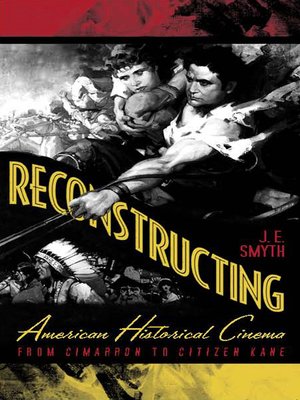
Sign up to save your library
With an OverDrive account, you can save your favorite libraries for at-a-glance information about availability. Find out more about OverDrive accounts.
Find this title in Libby, the library reading app by OverDrive.



Search for a digital library with this title
Title found at these libraries:
| Loading... |
In Reconstructing American Historical Cinema: From Cimarron to Citizen Kane, J. E. Smyth dramatically departs from the traditional understanding of the relationship between film and history. By looking at production records, scripts, and contemporary reviews, Smyth argues that certain classical Hollywood filmmakers were actively engaged in a self-conscious and often critical filmic writing of national history. Her volume is a major reassessment of American historiography and cinematic historians from the advent of sound to the beginning of wartime film production in 1942. Focusing on key films such as Cimarron (1931), The Public Enemy (1931), Scarface (1932), Ramona (1936), A Star Is Born (1937), Jezebel (1938), Young Mr. Lincoln (1939), Gone with the Wind (1939), Stagecoach (1939), and Citizen Kane (1941), Smyth explores historical cinema's connections to popular and academic historigraphy, historical fiction, and journalism, providing a rich context for the industry's commitment to American history. Rather than emphasizing the divide between American historical cinema and historical writing, Smyth explores the continuities between Hollywood films and history written during the first four decades of the twentieth century, from Carl Becker's famous "Everyman His Own Historian" to Howard Hughes's Scarface to Margaret Mitchell and David O. Selznick's Gone with the Wind. Hollywood's popular and often controversial cycle of historical films from 1931 to 1942 confronted issues as diverse as frontier racism and women's experiences in the nineteenth-century South, the decline of American society following the First World War, the rise of Al Capone, and the tragic history of Hollywood's silent era. Looking at rarely discussed archival material, Smyth focuses on classical Hollywood filmmakers' adaptation and scripting of traditional historical discourse and their critical revision of nineteenth- and twentieth-century American history. Reconstructing American Historical Cinema uncovers Hollywood's diverse and conflicted attitudes toward American history. This text is a fundamental challenge the prevailing scholarship in film, history, and cultural studies.






